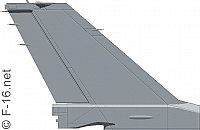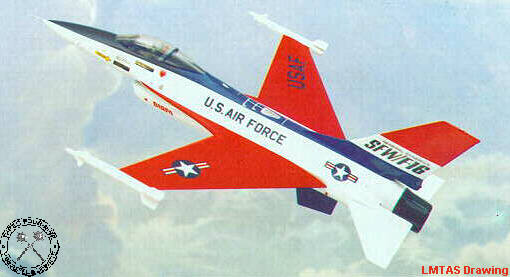 |
F-16 SFWSwept Forward Wing |
History
In 1976, DARPA (Defense Advanced Research Projects Agency) awarded funds to General Dynamics, Rockwell and Grumman under the Forward-Swept Wing Program. Forward-swept wings offer low drag and improved low-speed handling characteristics, but they are extremely difficult to manufacture using conventional techniques. The use of advanced composite materials makes the wing rigid enough to withstand the forces introduced by aerodynamic stress, while simultaneously avoiding a weight penalty.
The engineers at General Dynamics studied several designs, including one with canards and an aft-mounted wing. The final design submitted to DARPA used the landing gear and most fuselage components of the traditional F-16, yet it had a slightly lengthened and strengthened fuselage to allow the forward-swept wing to be attached, since the new wing was slightly larger than the traditional wing.
The SFW/F-16 was rejected by DARPA in January of 1981 in favor of the Grumman 712 (an F-5/F-20 derivative), later designated the X-29A. The decision was mainly a political one, as many thought that the test-scene at NASA was heavily dominated by General Dynamics' F-16s (AFTI, CCV, F-16XL). Another much-cited reason was that "One could only learn so much from a single airframe", though in retrospect, ongoing experiments with the F-16 seem to prove this wrong. It is interesting to note that the chosen design, the X-29A, consists for about 16% of F-16 components, including the Fly-By-Wire Flight Control System.
After the F-5 airframe was chosen for this project, all development into this version halted.
Special thanks
- Jason Hodgkiss
Please use this form to add any list any error or omissions you find in the above text.
Note: your comments will be displayed immediately on this page. If you wish to send a private comment to the webmasters, please use the Contact Us link.

